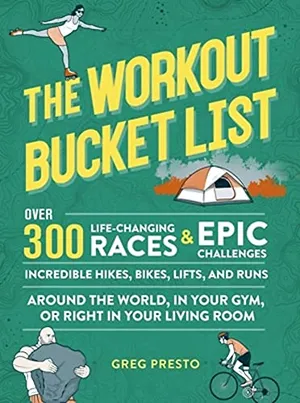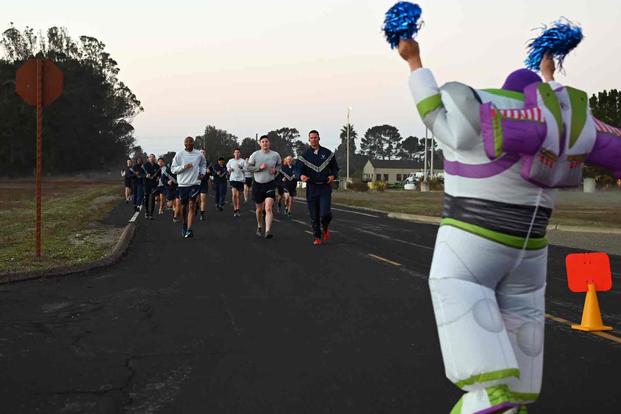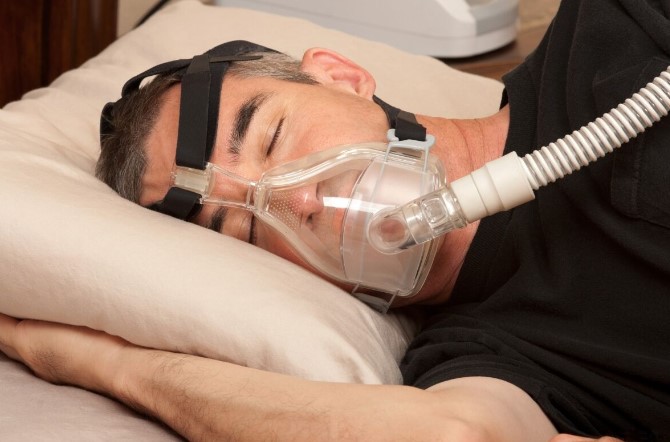Want to Work Out Like Walt Whitman or Henry VIII? Try These Historic Fitness Regimes | History
/https://tf-cmsv2-smithsonianmag-media.s3.amazonaws.com/filer_public/48/7c/487c2b81-6f79-4831-85ae-372a8b531db8/historicworkouts-v1.jpg)
:focal(800x602:801x603)/https://tf-cmsv2-smithsonianmag-media.s3.amazonaws.com/filer_public/48/7c/487c2b81-6f79-4831-85ae-372a8b531db8/historicworkouts-v1.jpg)
This is how you really sweat to the oldies.
Bettmann/Getty Images; Wikimedia Commons; Illustration by Emily Lankiewicz
Where you’re going, you don’t need a DeLorean. You’ve already got a time machine: your body. With it, you can do battle with medieval knights, walk on the decks of the Titanic, play ball on the White House lawn, or play a round of tennis with Henry VIII.
This is how you really sweat to the oldies. Try these workouts from decades and centuries ago to experience what it was like to live—and move—in the past.
Your heartrate will go on with the Titanic workout
Titanic‘s first-class gymnasium/https://tf-cmsv2-smithsonianmag-media.s3.amazonaws.com/filer_public/b0/0a/b00a4eeb-edaa-48db-a66f-45abfd0f7e1d/titanic_gym.jpeg)
The Titanic didn’t just have lower-class stowaways sketching nudes and falling in love with first-class passengers—the unsinkable ship also had a 784-square-foot gymnasium.
Thanks to Jason King, who creates historically perfect models of the Titanic, we’ve got the plans to the mega-boat’s swole center. It was filled with equipment you won’t see in your gym 100 years later, including a “horse-riding” machine, a “stomach-massaging” machine, even a “camel hump!”
But there were some apparatuses you’d recognize. So do this workout that would have been possible on the Titanic to help build the barrel chest of a 1910s strongman, and, more important, the grip strength you’ll need to hang on to a piece of driftwood until the rescue ships arrive.
SECTION 1: Warm Up on the Bicycle Race Machine
The Titanic was equipped with a “bicycle race machine”—basically a pair of stationary bikes with a giant clock in front. Hop on a stationary bike and warm up for five minutes.
SECTION 2: Build Strength on the High Cable Pulley Machine
The Titanic’s gym had a two-handle cable stack with the handles anchored high—basically a cable cross machine. Use it to perform these four exercises.
EXERCISE 1: Cable Fly (5 sets of 8 reps)
- Begin in the “Jack, I’m flying” position: Stand tall, holding the cables out to the side, palms facing forward. Bend forward slightly into an athletic position.
- Squeeze your chest to bring the cables down and in front of your chest, keeping your arms straight, until your fists touch.
- Control the movement to return to start, and repeat. This exercise will give you the hugging strength you need so you won’t let go of the driftwood door.
EXERCISE 2: Half-kneeling Single-Arm Lat Pull-Down (5 sets of 8 reps per side)
- Kneel in front of the stack with your right knee down, your left foot flat on the floor. Both knees should be bent at a 90-degree angle. Reach up to grab the cable handle with your right hand.
- Keeping your chest up and your torso and hips square, bend your elbow and pull the handle down toward your shoulder.
- Return to start, and repeat. Do all your reps on one side, then switch your leg positions and perform reps with the left hand.
EXERCISE 3: Standing Cable Wood Chop (5 sets of 10 reps per side)
- With the cable stack at your side, grab the handle with one hand and step away from the tower. You should be around an arm’s length away from the pulley, with the tension of the weight on the cable.
- In this position, set your feet shoulder-width apart and get into an athletic stance with knees slightly bent. Grab the cable with your other hand so you’re now holding it with both hands in front of your body.
- From this position, pull the handle down and across your body, past your front knee, as you rotate your torso. The motion should look as if you’re chopping wood.
- Return to the higher position, and repeat. Do all your reps on this side, then switch sides and repeat.
EXERCISE 4: Standing Cable Biceps Curl (4 sets of 12 reps)
- Stand straight with the cable handles at each of your sides. Hold your arms in a “T” pose with a cable handle in each hand.
- Keeping your chest out and your shoulders back, curl each handle until you’re in a classic “muscle man” pose, with your fist at or near your bicep.
- Return to start, and repeat.
SECTION 3: Forge Some Stamina on the Rowing Machine
The Titanic’s rowing machine looked imposing: big, long oars that resembled an Olympic sculling boat. But the rowing machine at your gym will do fine. By performing intervals— bursts of intense work alternated with rest—you can increase your stamina and burn more fat in less time than you would at a constant pace. Row hard for 1 minute, then rest for 1 minute. Repeat six to seven times.
Work your abs like Babe Ruth (yes, really)
Babe Ruth knocks out homers during practice at the 1927 World Series. Bettmann/Getty Images/https://tf-cmsv2-smithsonianmag-media.s3.amazonaws.com/filer_public/e1/c8/e1c81fdf-fdf0-4606-850d-27d1fd8e1e73/gettyimages-515302080.jpg)
When you think abs, you probably don’t think Babe Ruth. He wasn’t considered the picture of health in his own day, either. The Yankees legend was so rotund that in one newsreel, called “Sultan of Swat Starts Battle on Fat,” the announcer says, mockingly, that Ruth is “almost 40 and kind of fat” as his legs are pumped into his stomach by trainer Artie McGovern.
One of America’s first prominent personal trainers, McGovern worked with celebrities like boxing champion Jack Dempsey, cartoonist Rube Goldberg, and department store magnate Marshall Field. But his most famous client was America’s most famous man: the Bambino himself. And McGovern agreed that the Babe was fat—but thought that should inspire the average American.
Ruth would put in two hours of work each day to battle the bulge, working with medicine balls, dumbbells, and treadmills. But to ab acolyte McGovern, who advocated for ab work long before Men’s Health made a six-pack trendy, it was work on the trunk that gave the Sultan more Swat: “I believe the intensive abdominal workouts we gave Babe in 1925 were as much responsible for the great showing he made during the 1926 season.” [In the 1926 World Series, Babe Ruth hit three home runs in one game.]
In his book, McGovern outlined exercises he says he used with the original Home Run King. See if you can keep up with 1925’s “fat and 40” super-athlete.
EXERCISE 1: Weighted Vacuum (40 reps)
- Lie faceup in a classic sit-up position. Hold a book or weight against your abdomen.
- Raise the weight by expanding your abdomen, then lower it by relaxing your stomach.
EXERCISE 2: Supine Alternating Toe Touches (6 reps for each side)
- Lie faceup with your arms and legs extended.
- Keeping your arms and legs straight, lift your right arm and left leg up, trying to touch your left toes with your right hand.
- Return to start and repeat on the other side.
EXERCISE 3: Reverse Supine Alternating Toe Touches (6 reps for each side)
- Reverse exercise 2: Start with your arms and legs lifted up as if you were trying to touch your toes.
- Lower your left leg and right arm simultaneously, keeping your right leg and left arm lifted.
- Return to the top and lower the right leg and left arm. Alternate.
EXERCISE 4: V-Up and Touch (6 reps)
- McGovern calls this the “perfect abdominal exercise.” Lie faceup with arms and legs fully extended.
- Keeping both your arms and legs straight, raise your legs until they are perpendicular with your torso so your feet point at the ceiling. At the same time, raise your arms up and to the sides of your legs until your palms touch the floor next to your butt.
- Return to start.
EXERCISE 5: Straight-Leg Sit-Up (6 reps)
- Lie faceup with your arms and legs extended.
- Keeping your legs on the ground, perform a sit-up, reaching for your toes.
EXERCISE 6: Arm and Leg Clap (6 reps)
- Lie faceup with your arms extended straight in front of your chest, and your legs perpendicular to the floor so that your feet point toward the ceiling.
- Place your hands together and your feet together.
- Now simultaneously separate your arms and legs so both form “V” shapes.
- Clap them back together.
EXERCISE 7: Arm and Leg Scissor (8 reps for each side)
- Start in the same position as exercise 6, with hands touching each other and feet touching each other.
- This time, cross your legs and arms simultaneously to one side, return to start, then cross the other way.
Play Henry VIII’s tennis game
Tennis in the Days of the Tudors’, circa 1934. Illustration showing real tennis (formerly royal tennis), as played during the reigns of Henry VII (1485-1509) and Henry VIII (1509-1547). From The Romance of the Nation, Volume One, edited by Charles Ray. [The Amalgamated Press, Ltd., London, circa 1934]. Artist Unknown. The Print Collector/Getty Images/https://tf-cmsv2-smithsonianmag-media.s3.amazonaws.com/filer_public/73/7a/737a0588-efb0-4db7-a274-f1805396a2e5/gettyimages-1022820818.jpg)
If you’ve watched The Tudors, you may remember Henry VIII and a courtier, played by Henry Cavill, playing a different kind of tennis—indoors, with lines on the floor, walls all around, and spectators in windows along one side. It’s not just something the show made up. It’s a real game—one that Henry VIII played, and one you can still play today—and it’s a blast.
It’s called court tennis—or sometimes “real tennis”—and it’s actually even older than Henry. The game grew out of monasteries going back as far as the 1300s and has been played by other kings, including France’s Louis XVI. In fact, one of the revolutionary votes for a French constitution was held inside a Paris “real” tennis court.
That court is much different from the outdoor version. Besides having windows for spectators and walls on three sides, there’s a small, sloped roof along three sides. Players must serve so the ball hits this roof before coming down into play, and the rules get weirder: If you hit the ball into one of three window targets, you automatically score. You can bounce the ball off any of the court’s 13 surfaces, and try to outwit your opponent with one of more than 50 serves, with names like the “giraffe” and the “backspin underarm twist.”
That variety of surfaces, serve types, and scoring gives the game a combination of outdoor tennis–level aerobic challenge with strategy that borders on chess—meaning older, wily players can excel, too. The current world champion is 54 years old!
You can join the 6,000 worldwide players of this centuries-old game and get your own taste of its mind- and body-challenging rules and play—there are 11 court tennis clubs scattered throughout the United States, including in Boston; Philadelphia; New York; Aiken, South Carolina; Newport, Rhode Island; near Washington, DC; and in Chicago. Many offer free lessons and seminars and loaner equipment to players. At the Prince’s Court in McLean, Virginia, where I’ve played, the club pro, Ivan Ronaldson, is the son of a former world champion and grew up living at Henry VIII’s home court. Visit www.princescourt.com to learn more about him, or find one of the other clubs via Google.
Leaves of Kicking Ass: Walt Whitman’s workout
Walt Whitman as photographed by Mathew Brady/https://tf-cmsv2-smithsonianmag-media.s3.amazonaws.com/filer_public/9e/a3/9ea30d62-6244-45b4-94c5-15dce65d629c/walt_whitman_-_brady-handy_restored.png)
When you think of an active, “manly” author, Ernest Hemingway may pop to mind. But Papa’s got nothing on Whitman. Like the ambulance-driving novelist, Whitman worked numerous jobs—as a teacher, a journalist, and a battlefield nurse in the Civil War—before becoming an author. And the Leaves of Grass poet was as much a proponent of a vigorous life as the amateur boxer Hemingway.
Even into his 60s, a decade after suffering a stroke that partially paralyzed him, Whitman would spend an hour each day exercising. At 66, the poet described his workout of wrestling with an oak tree “as thick as my wrist, 12 feet high—pushing and pulling.” For cross training, he would shout “declamatory pieces, sentiments, sorrow, anger . . . or inflate my lungs and sing . . . I make the echoes ring, I tell you!”
Whitman says his reader should not “be afraid of . . . ‘how it will look’ to outsiders, or what they will say.” Still, shouting and sapling-bending might make you self-conscious. Fret not! You can still get a Whitman-approved workout. In 1858, the poet wrote a series of newspaper columns, titled “Manly Health and Training.”
“If you are a student,” Whitman writes, “be also a student of the body . . . realizing that a broad chest, a muscular pair of arms, and two sinewy legs will be just as much credit to you, and stand you in hand through your future life, equally with your geometry, your history, your classics, your law, medicine, or divinity. Let nothing divert you from your duty to your body.”
Now that’s poetry. Try this workout derived from Whitman’s advice from his column, and you don’t need a gym to do it. Whitman was adamant that exercises be done in the open air.
WARM-UP
Dynamic Overhead Stretch (10 reps)
Whitman’s instructions: “Throw forward the arms, with vigorous motion, and then extend them or lift them upward.”
A little more detail: Stand with your arms at your sides, palms facing in. Forcefully bring your arms forward and up in an arc until they’re over your head. As you get to the top, reach backward into a slight back bend, creating a crescent moon shape with your body.
Active Plank (8 reps)
Whitman’s instructions: “Place the body in position occasionally, for a moment, with all the sinews of the arms and legs strained to their utmost tension . . .”
A little more detail: Assume the classic plank position, with your forearms on the floor, elbows beneath your shoulders, and your body forming a straight line from head to heels. Instead of just hanging out here, tense everything: Squeeze your thighs and glutes, grip the floor with your hands, and brace your abs as if you’re about to take a punch. Do this all-over tensing for ten seconds, then pause and repeat.
GET MOVING
Lunges (8 reps for each side)
Whitman’s instructions: “Take very long strides rapidly forward, and then, more slowly and carefully, backward.”
A little more detail: Stand with your hands on your hips, feet shoulder-width apart. Take a long lunge step forward with your right leg, descending as you step until your knees both form 90-degree angles. Press through your front foot to return to standing in control. Repeat on the other side.
Single-Leg Deadlift (4 reps for each side)
Whitman’s instructions: “The simple exercise of standing on one foot and lowering so as to touch the bent knee of the other leg to the ground, and then rising again on the first foot, is also a good one.”
A little more detail: Stand next to a wall or chair so you can grab it for support if you need it. Stand on one foot, with the raised knee bent at a 90-degree angle. Keeping your torso upright, bend the knee of your planted leg to descend until your raised knee taps the floor. Press back to standing, then repeat. Then switch sides and repeat.
Fence or Bench Hops (10 reps for 4 sets)
Whitman’s instructions: “. . . spring over a fence, and then back again, and then again and again . . .”
A little more detail: Stand on one side of a flat bench, with legs parallel to it, and grip the bench with one hand on each side. Hop over the bench as if it were a horse, landing with both feet on the other side. Repeat. Over time, try to increase the rate at which you jump over and back, then increase the number of total jumps in each set.
Shadowboxing (4 reps)
Whitman’s instructions: “. . . pummel some imaginary foe, with stroke after stroke from the doubled fists, given with a will . . .”
A little more detail: Try this simple shadowboxing routine: Standing in a traditional boxing stance, perform three punches—for a right-handed fighter, think left-right-left. Then shuffle to your left in a circle, as if around a heavy bag. Then repeat: three punches, shuffle. Do this for a one-minute round. In the next round, shuffle right instead of left. Start by going for four one-minute rounds, working your way up to three-minute rounds.
BURN IT OUT
Jump Squats (number of reps varies)
Whitman’s instructions: “. . . clap the palms of the hands on the hips and simply jump straight up, two or three minutes at a time . . .”
A little more detail: For many adults, jumping right back into jumping can be rough on the joints. If you haven’t been jumping recently, do a full-body extension instead. To perform the move, stand with your feet shoulder-width apart, knees slightly bent. Keeping your chest up, drive your hands behind your glutes and bend your knees as if you were going to initiate a jump. Then explosively extend as if you were jumping straight up, bringing your hands up overhead into a full-body extension while coming up onto your toes—but without jumping. Return to start and repeat. Once you’ve done this for a few weeks, you can graduate to jumping.
Test your endurance against John Quincy Adams
John Quincy Adams, c. 1843-48, photographed by Mathew Brady/https://tf-cmsv2-smithsonianmag-media.s3.amazonaws.com/filer_public/ee/2c/ee2ccb5d-dcd2-4457-836a-834f5f823015/548px-john_q_adams.jpg)
Your mental image of John Quincy Adams is probably . . . round. But POTUS #6 was obsessed with fitness, timing his daily walks to Congress, and aiming for new records in marathon skinny-dipping sessions in the Potomac River.
At age 55, JQA wrote in his journal that he’d swum in the D.C. river for 50 minutes without touching bottom. The next year, he smashed his own record, staying afloat for an hour and 20 minutes. His wife and doctor begged him to stop, so 80 minutes became his high-water mark.
Find a safe pool and see how long you can stay off the bottom while swimming around. Can you beat 50 minutes? Or are you going to be beaten by a rotund, 55-year-old man from the 1820s?
Excerpted from THE WORKOUT BUCKET LIST: Over 300 Life-Changing Races, Epic Challenges, and Incredible Hikes, Bikes, Lifts, and Runs around the World, in Your Gym, or Right in Your Living Room by Greg Presto. Copyright © 2022. Available from Running Press, an imprint of Hachette Book Group, Inc.
Recommended Videos








